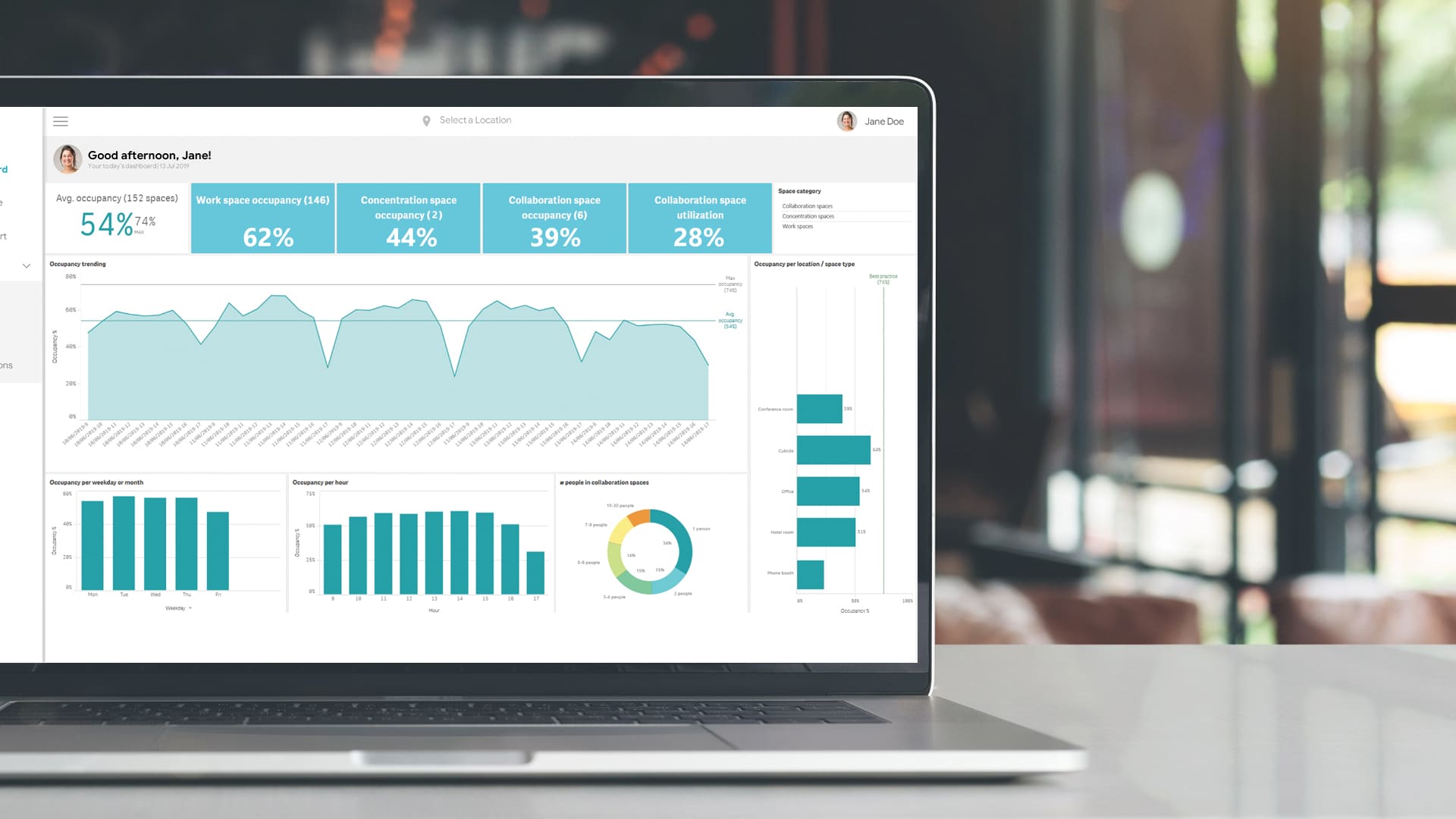One significant question surrounding a return to the office is how much space companies will need as they (potentially) accommodate more flexible styles of working. The answer can have significant financial implications: after payroll, real estate can be one of the largest cost drivers for companies, particularly in knowledge industries.1 Because leases tend to be long-term, wasted space in high-rent areas can result in years of unnecessary expense, whereas overcrowding can have negative implications for employee productivity. Getting the balance right is therefore one of the biggest challenges real estate teams face in the current environment. As companies get to grips with remote and hybrid work, they will need to adjust their office footprint to the new realities on the work floor.
Challenges in projecting office space needs in a hybrid world
COVID-19 and the expansion of remote working have hugely disrupted office space projections,2 creating a uniquely challenging task for companies seeking to optimize their office footprint.
The first consequence of the pandemic was to prompt significant changes in employment numbers. On the one hand, many companies have been forced to implement workforce reductions or hiring freezes. With fewer employees overall, companies in adversely impacted industries expect to require less space going forward, even apart from changes in seating arrangements or remote work. At the same time, notably in the technology sector, some firms have experienced explosive growth and expect to expand their workforces, often in new locations. For them, a key question is how rapidly they will continue to expand as the economy recovers.
At the same time, the space calculation is complicated by the potential expansion of remote or hybrid work. Over the past year, many companies have discovered that some job functions or tasks can be completed just as well (if not better) at home than at the office. With employee surveys pointing to greater demand to work from home at least some of the time, employers are now considering the impact of a partially remote workforce on office demand.
At first glance, one might think that hybrid work simply translates into a smaller office footprint, but demand might not be that straightforward. The need for space will be wildly different for a company that assigns employees specific days to work in the office compared to one in which employees choose which days (or even hours) they will make their commute. In the latter case, office demand could be highly volatile or unevenly distributed across different times and days. Perhaps the majority of employees will choose to come in on Fridays so that they can socialize, leading to high demand for space, while choosing to stay home on Mondays while they catch up on emails, resulting in a near-empty office.
This question of tasks raises a third challenge that emerges from the growth of hybrid working (which will be discussed at greater length in the next blog post): the need to accommodate different styles of working in the office. One common expectation about the future office is that it will increasingly be a hub for collaboration and socialization,³ with individual, focused work shifting largely to remote locations. Depending on the size and layout of the collaboration spaces that employees choose to use in the office, the amount of space used per person might actually increase in this scenario relative to a workstation-based office – but the extent of this change remains to be seen.

Tracking actual office use
The preceding discussion reveals the scale of the challenge facing real estate teams: most companies expect to see changes to ways of working that could significantly shape office space needs, but many of the trends are pulling in opposing directions. Moreover, it is unclear how persistent those trends will be. Just as many reports continue to emerge about “Zoom fatigue,” the appeal of hybrid or remote work may also wane over time.
Under these circumstances, the best way to plan for and adapt to workplace changes is to collect and analyze high-quality data about how the office is actually being used. Various types of sensors can track occupancy and utilization of spaces, revealing patterns such as:
- Which collaboration spaces are most popular and which are empty
- Whether workstations are truly a thing of the past or whether employees actually treat the office as a place to get away from distractions from home;
- Whether the choice of working from home or the office is affected by seasons, with some choosing to shift entirely to the office in order to have access to better air conditioning or heating; and
- Whether or not hybrid work trends are actually the same across all locations.
Here it is crucial to note that sensors themselves are only a partial solution. The ability to make informed portfolio decisions ultimately depends on the quality of the analytical tools and the ease of translating raw data into useful insights. In other words, choosing the right analytics platform is just as important as choosing the right sensor.
This post is part of a blog series about the way workplace technologies can facilitate a hybrid office and changing ways of working.
- JLL’s 3-30-300 rule represents a rule of thumb for the proportional costs of utilities, rent, and payroll, respectively. JLL (Sept. 2016), “A surprising way to cut real estate costs.” www.us.jll.com/en/trends-and-insights/workplace/a-surprising-way-to-cut-real-estate-costs
- A recent CBRE survey found that 80% of occupiers expected to reduce their office footprint over the next 3-5 years. CBRE Research (Feb. 2021), “Tomorrow’s Office: Future Directions for Portfolio and Workplace Strategy”
- McKinsey surveys have found that two-thirds of respondents are expecting to reconfigure their offices to move from individual spaces to collaborative spaces. McKinsey Global Institute (Feb. 2021). “The future of work after COVID-19,”mckinsey.com/featured-insights/future-of-work/the-future-of-work-after-covid-19










